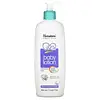What's inside
What's inside
 Key Ingredients
Key Ingredients

 Benefits
Benefits

 Concerns
Concerns

 Ingredients Side-by-side
Ingredients Side-by-side

Water
Skin ConditioningAmmonium Lauryl Sulfate
CleansingMelia Azadirachta Leaf Extract
Skin ConditioningDecyl Glucoside
CleansingCocamidopropyl Betaine
CleansingGlycerin
HumectantPolysorbate 20
EmulsifyingCurcuma Longa Root Extract
MaskingVetiveria Zizanoides Root Extract
PerfumingParfum
MaskingPhenoxyethanol
PreservativeMethylchloroisothiazolinone
PreservativeMethylisothiazolinone
PreservativeDisodium EDTA
Citric Acid
BufferingBHT
AntioxidantCI 19140
Cosmetic ColorantCI 42090
Cosmetic ColorantButylphenyl Methylpropional
PerfumingHexyl Cinnamal
PerfumingLinalool
PerfumingWater, Ammonium Lauryl Sulfate, Melia Azadirachta Leaf Extract, Decyl Glucoside, Cocamidopropyl Betaine, Glycerin, Polysorbate 20, Curcuma Longa Root Extract, Vetiveria Zizanoides Root Extract, Parfum, Phenoxyethanol, Methylchloroisothiazolinone, Methylisothiazolinone, Disodium EDTA, Citric Acid, BHT, CI 19140, CI 42090, Butylphenyl Methylpropional, Hexyl Cinnamal, Linalool
Water
Skin ConditioningCetyl Alcohol
EmollientOlea Europaea Fruit Oil
MaskingPrunus Amygdalus Dulcis Oil
Skin ConditioningGlyceryl Stearate Se
EmulsifyingEthylhexyl Stearate
EmollientSorbitan Stearate
EmulsifyingGlycerin
HumectantSodium Cetearyl Sulfate
CleansingPhenoxyethanol
PreservativeDimethicone
EmollientParfum
MaskingIsopropyl Myristate
EmollientAcrylates/C10-30 Alkyl Acrylate Crosspolymer
Emulsion StabilisingSida Cordifolia Root Extract
Skin ConditioningGlycyrrhiza Glabra Root Extract
BleachingTinospora Cordifolia Stem Extract
Skin ConditioningUndecylenoyl Glycine
CleansingCapryloyl Glycine
CleansingXanthan Gum
EmulsifyingDisodium EDTA
Tocopheryl Acetate
AntioxidantSodium Hydroxide
BufferingWater, Cetyl Alcohol, Olea Europaea Fruit Oil, Prunus Amygdalus Dulcis Oil, Glyceryl Stearate Se, Ethylhexyl Stearate, Sorbitan Stearate, Glycerin, Sodium Cetearyl Sulfate, Phenoxyethanol, Dimethicone, Parfum, Isopropyl Myristate, Acrylates/C10-30 Alkyl Acrylate Crosspolymer, Sida Cordifolia Root Extract, Glycyrrhiza Glabra Root Extract, Tinospora Cordifolia Stem Extract, Undecylenoyl Glycine, Capryloyl Glycine, Xanthan Gum, Disodium EDTA, Tocopheryl Acetate, Sodium Hydroxide
Ingredients Explained
These ingredients are found in both products.
Ingredients higher up in an ingredient list are typically present in a larger amount.
Disodium EDTA plays a role in making products more stable by aiding other preservatives.
It is a chelating agent, meaning it neutralizes metal ions that may be found in a product.
Disodium EDTA is a salt of edetic acid and is found to be safe in cosmetic ingredients.
Learn more about Disodium EDTAGlycerin is already naturally found in your skin. It helps moisturize and protect your skin.
A study from 2016 found glycerin to be more effective as a humectant than AHAs and hyaluronic acid.
As a humectant, it helps the skin stay hydrated by pulling moisture to your skin. The low molecular weight of glycerin allows it to pull moisture into the deeper layers of your skin.
Hydrated skin improves your skin barrier; Your skin barrier helps protect against irritants and bacteria.
Glycerin has also been found to have antimicrobial and antiviral properties. Due to these properties, glycerin is often used in wound and burn treatments.
In cosmetics, glycerin is usually derived from plants such as soybean or palm. However, it can also be sourced from animals, such as tallow or animal fat.
This ingredient is organic, colorless, odorless, and non-toxic.
Glycerin is the name for this ingredient in American English. British English uses Glycerol/Glycerine.
Learn more about GlycerinParfum is a catch-all term for an ingredient or more that is used to give a scent to products.
Also called "fragrance", this ingredient can be a blend of hundreds of chemicals or plant oils. This means every product with "fragrance" or "parfum" in the ingredients list is a different mixture.
For instance, Habanolide is a proprietary trade name for a specific aroma chemical. When used as a fragrance ingredient in cosmetics, most aroma chemicals fall under the broad labeling category of “FRAGRANCE” or “PARFUM” according to EU and US regulations.
The term 'parfum' or 'fragrance' is not regulated in many countries. In many cases, it is up to the brand to define this term.
For instance, many brands choose to label themselves as "fragrance-free" because they are not using synthetic fragrances. However, their products may still contain ingredients such as essential oils that are considered a fragrance by INCI standards.
One example is Calendula flower extract. Calendula is an essential oil that still imparts a scent or 'fragrance'.
Depending on the blend, the ingredients in the mixture can cause allergies and sensitivities on the skin. Some ingredients that are known EU allergens include linalool and citronellol.
Parfum can also be used to mask or cover an unpleasant scent.
The bottom line is: not all fragrances/parfum/ingredients are created equally. If you are worried about fragrances, we recommend taking a closer look at an ingredient. And of course, we always recommend speaking with a professional.
Learn more about ParfumPhenoxyethanol is a preservative that has germicide, antimicrobial, and aromatic properties. Studies show that phenoxyethanol can prevent microbial growth. By itself, it has a scent that is similar to that of a rose.
It's often used in formulations along with Caprylyl Glycol to preserve the shelf life of products.
Water. It's the most common cosmetic ingredient of all. You'll usually see it at the top of ingredient lists, meaning that it makes up the largest part of the product.
So why is it so popular? Water most often acts as a solvent - this means that it helps dissolve other ingredients into the formulation.
You'll also recognize water as that liquid we all need to stay alive. If you see this, drink a glass of water. Stay hydrated!
Learn more about Water